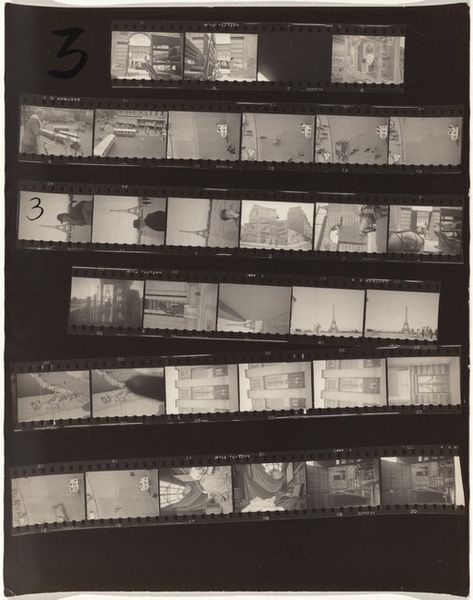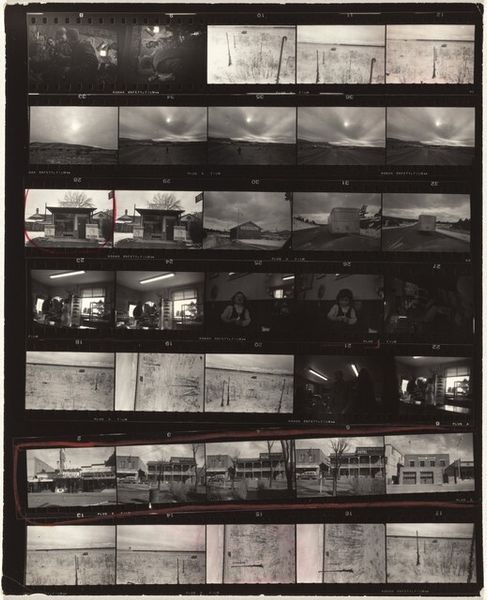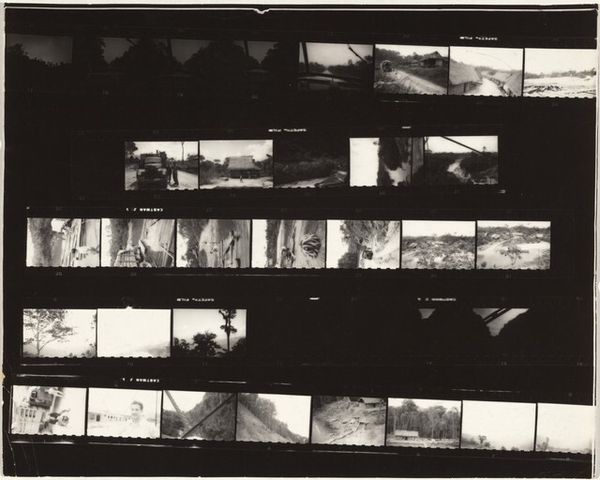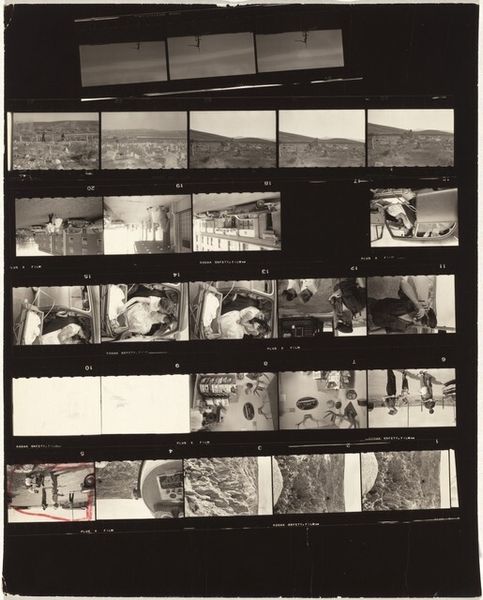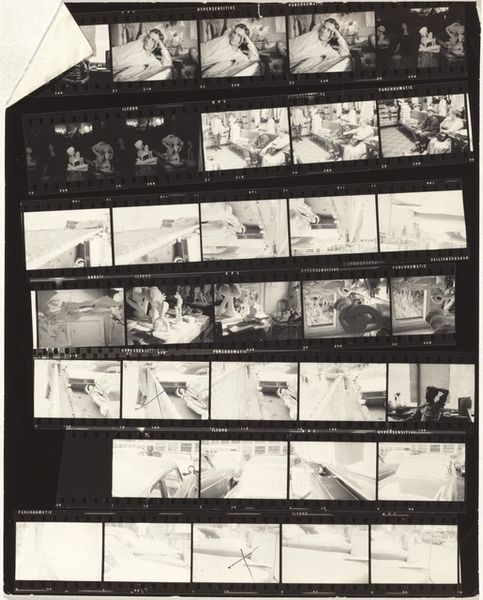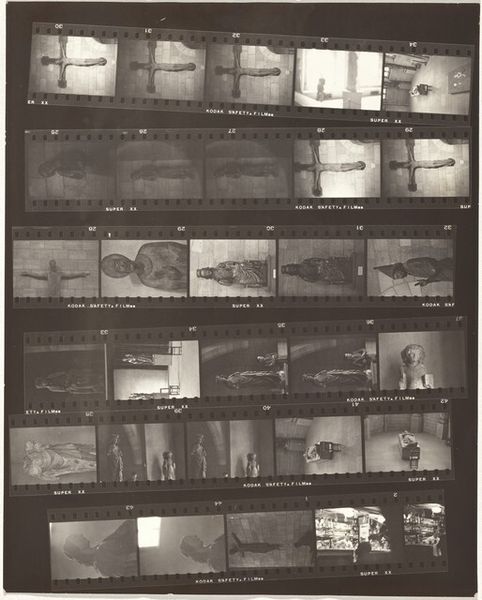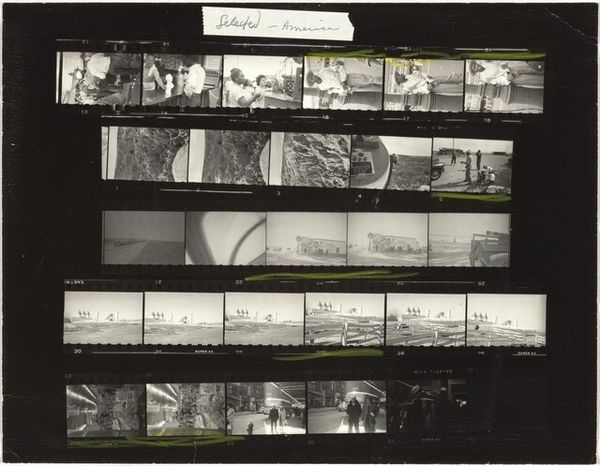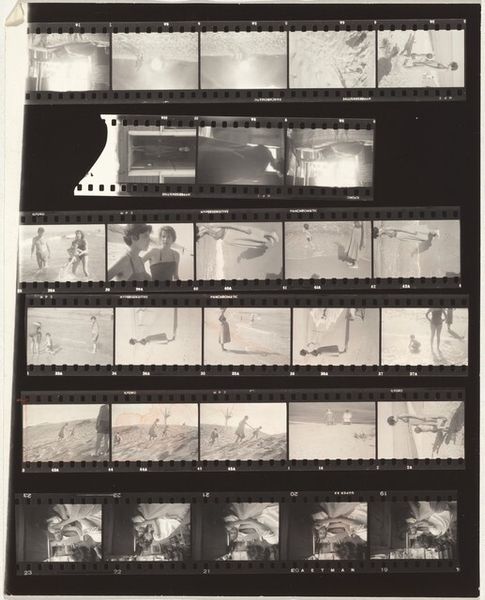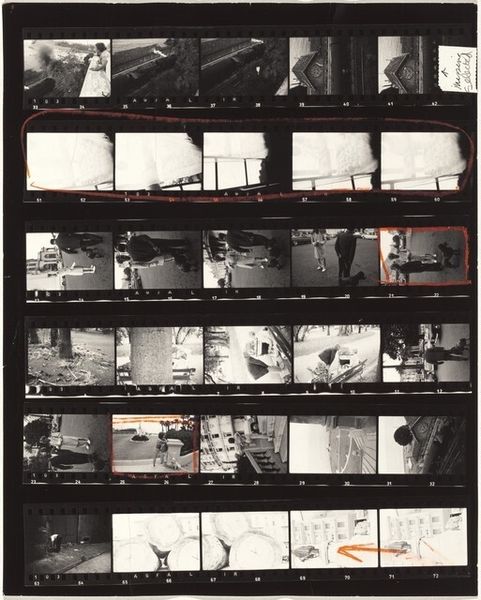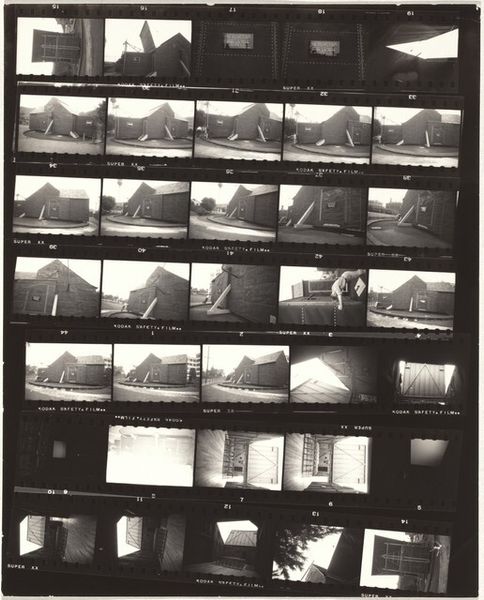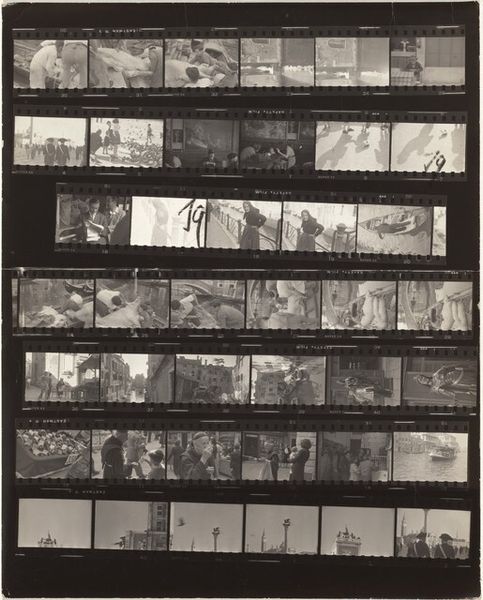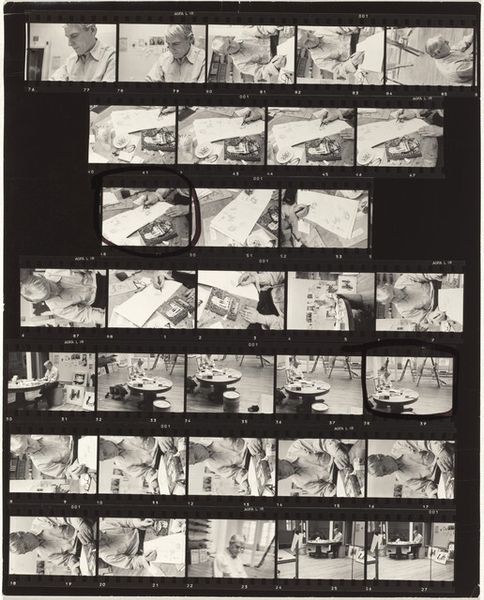
contact-print, photography
#
landscape
#
contact-print
#
street-photography
#
photography
#
monochrome photography
#
cityscape
#
realism
#
monochrome
Dimensions: overall: 25.3 x 20.4 cm (9 15/16 x 8 1/16 in.)
Copyright: National Gallery of Art: CC0 1.0
Curator: Let's take a look at Robert Frank's "Guggenheim 415--Los Angeles," a contact sheet he made between 1955 and 1956. It’s part of his work for The Americans. What are your first impressions? Editor: I'm immediately struck by its raw, almost diaristic feel. It's not a single image but a sequence, revealing the artist's process of selection. It’s so immediate and feels unfiltered. Curator: Precisely. What's interesting here is that it gives us insight into Frank's editing process, highlighting his concerns for the composition and the ways in which mass media represents the US. Each frame represents a different choice of viewpoint of the same subject and all framed by this mass-produced, inexpensive photography. Editor: And the repetition—the multiple views of what seem like ordinary street scenes, power lines, or car interiors— it emphasizes the banality of everyday life and automobile use as freedom, but this material constraint limits creativity, almost creating a uniform culture. Curator: I agree. Frank’s technique is pivotal. The gritty, high-contrast aesthetic—likely a consequence of working quickly with available light and printing as contact-sheet—it challenges the glossy idealism that was often projected in mainstream photography of the time. But the accessibility of film makes all those elements to come across democratically, don't you think? Editor: Absolutely. It becomes a commentary on the culture, on consumerism, social inequity, and even the carceral state – that these issues persist beneath the shiny surface of the American Dream. Curator: It speaks volumes about Frank’s engagement with his socio-political landscape and his commentary on social realism. Frank highlights social critique not only through choice of subject, but through the materials themselves, giving them an "aura" through use and highlighting. Editor: The work offers us a valuable behind-the-scenes glimpse into how these narratives are built, consumed, and disseminated. Curator: In conclusion, Frank’s approach underscores that artistic interpretation shapes our perceptions of history, society, and ultimately ourselves. Editor: Indeed. These images remain crucial to our critical engagement with art as material culture and the ways imagery continues to perpetuate ideology.
Comments
No comments
Be the first to comment and join the conversation on the ultimate creative platform.
